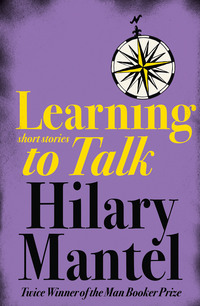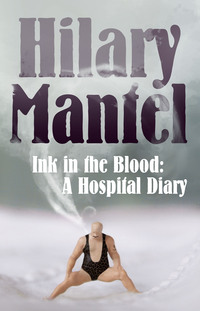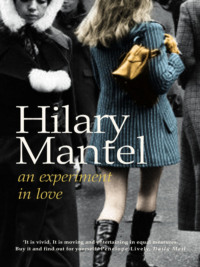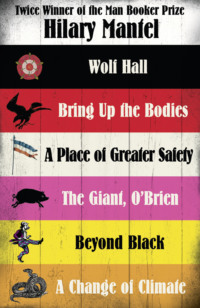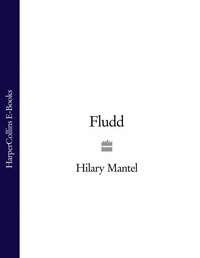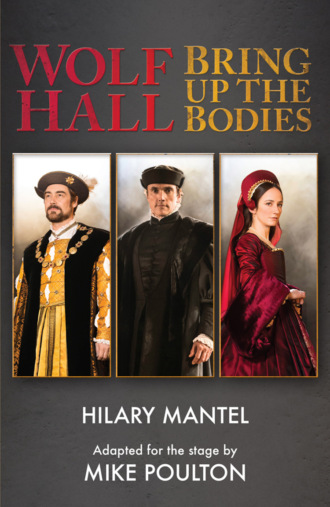
Полная версия
Wolf Hall & Bring Up the Bodies: RSC Stage Adaptation - Revised Edition

WOLF HALL
and BRING UP THE BODIES
Adapted for the stage by
Mike Poulton
From the novels by
Hilary Mantel
With an introduction by Mike Poultonand character notes by Hilary Mantel

NICK HERN BOOKS
HarperCollinsPublishers
www.nickhernbooks.co.uk www.4thestate.co.uk
Contents
Title Page
Original Production
Introduction by Mike Poulton
Notes on Characters by Hilary Mantel
Characters
Dedication
Wolf Hall
Bring Up the Bodies
About the Authors
Copyright and Performing Rights Information
These adaptations of Wolf Hall and Bring Up the Bodies were originally commissioned by Playful Productions and were first produced by the Royal Shakespeare Company at the Swan Theatre, Stratford-upon-Avon, on 11 December 2013. The productions transferred to the Aldwych Theatre, London, on 1 May 2014, presented by Matthew Byam Shaw, Nia Janis and Nick Salmon for Playful Productions and the Royal Shakespeare Company, Bartner/Tulchin Productions and Georgia Gatti for Playful Productions. The cast was as follows:
MARK SMEATONJoey BateyCHARLES BRANDON, DUKE OF SUFFOLKNicholas BoultonKATHERINE OF ARAGON/JANE BOLEYN, LADY ROCHFORDLucy BriersJANE SEYMOUR/PRINCESS MARY/LADY WORCESTERLeah BrotherheadMARY BOLEYN/LIZZIE WYKYS/MARY SHELTONOlivia DarnleyTHOMAS HOWARD, DUKE OF NORFOLKNicholas DayENSEMBLEMathew FosterGREGORY CROMWELLDaniel FraserBARGE MASTER/WOLSEY’S SERVANTBenedict HastingsLADY IN WAITING/MAID/MARJORIE SEYMOURMadeleine HylandCARDINAL WOLSEY/SIR JOHN SEYMOUR/SIR WILLIAM KINGSTON/ARCHBISHOP WARHAMPaul JessonANNE BOLEYNLydia LeonardENSEMBLERobert MacPhersonTHOMAS CROMWELLBen MilesCHRISTOPHE/FRANCIS WESTONPierro Niél MeeKING HENRY VIIINathaniel ParkerGEORGE BOLEYN, LORD ROCHFORD/EDWARD SEYMOUROscar PearceSTEPHEN GARDINER/EUSTACHE CHAPUYSMatthew PidgeonTHOMAS MORE/HENRY NORRISJohn RammHARRY PERCY/WILLIAM BRERETONNicholas ShawRAFE SADLERJoshua SilverTHOMAS CRANMER/THOMAS BOLEYN/PACKINGTON/FRENCH AMBASSADORGiles TaylorTHOMAS WYATT/HEADSMANJay TaylorMUSICIANSRob Millett,Greg Knowles,Adam CrossDario Rossetti-BonellCatherine GroomAll other parts played by members of the company.DirectorJeremy HerrinDesignerChristopher OramSeason Lighting DesignerPaule ConstableWolf Hall Lighting DesignerPaule ConstableBring Up the Bodies Lighting DesignerDavid PlaterMusicStephen WarbeckSound DesignerNick PowellMovement DirectorSiân WilliamsFight DirectorBret YountAdapting Wolf Hall and Bring Up the Bodies
Mike Poulton
Over three years ago I was asked if it might be possible to adapt Hilary Mantel’s Wolf Hall for the stage. At the time of asking, Bring Up the Bodies did not exist. I’d read Wolf Hall and been gripped by it – from the first page to the last – page 653. It’s an extraordinary read. To call it a historical novel diminishes it – for me it’s a deeply serious piece of literature that happens to be set in and around the Court of Henry VIII. I can think of no other contemporary work of period fiction that comes near it. It’s that rare thing – a novel that richly deserved its fame and the accolades and prizes heaped upon it. I knew that Hilary was at work on a sequel and I was counting the days. I read Wolf Hall again. I said that I thought it could be made into a play if the right adapter could be found. ‘Might you be the right adapter?’ I was asked.
I had never worked with a living author. Earlier collaborators, Schiller, Chekhov, Turgenev, Chaucer, Malory, were all long dead. Hilary is very much alive, and I knew that for the project to work she and I would have to get on together, and agree about how best to engineer the transformation. I imagined it would be like taking apart a Rolls-Royce and reassembling the parts as a light aircraft. After three years together I can say that our collaboration has proved to be, for me at any rate, the most rewarding part of the experience. I have learned so much. Hilary has been generous and committed in every way with advice, with time, with invention, with challenges – all coming out of a deep knowledge of her subject, and easy familiarity with the complex minds of the characters she has created. Fortunately, she also has a love and instinctive understanding of the workings of theatre. Above all it’s been fun – a lot of fun. Her attitude from the first was that she had brought Cromwell and company to life, and I was free, within the limits of the story and the requirements of historical accuracy, to move them about on the stage as I saw fit. Though on many occasions she has had to pull me out of holes into which I’ve dug myself. I’ve never had that sort of help from Friedrich von Schiller.
So what were the problems we faced at the outset? I felt that, in terms of staging – in order to create a workable dramatic framework – we had to get to the death of Anne Boleyn. If we could do that, we’d have a strong tragic arc – the ascendancy of Anne followed by her rapid decline. If Thomas Cromwell’s rise from obscurity was to be the story of the play, the Court of Henry VIII must be the stage upon which he acts, and the rise and fall of Anne Boleyn the engine that drives the action. I knew Hilary was working on a sequel to Wolf Hall, to be called The Mirror and the Light. Could she take me as far as Anne’s execution? Yes, of course she could. But by the time she reached the summer of 1536 we had another book, Bring Up the Bodies, and so much tempting new material that the original play was rapidly becoming two plays. Since that time the only heartbreak in the process has been deciding what to set aside.
Structurally, the new material was exactly what was needed. Wolf Hall would take us to Anne’s coronation, and Bring Up the Bodies to her execution. But the growing scale of the project and size of the cast meant that we needed a new partner and a new home. The Royal Shakespeare Company, under its brightly shining, new-minted Artistic Director, Gregory Doran, welcomed us in. This was a turning point. I’d worked five times with Greg, and I knew that from the RSC we’d get the expertise, support and resources the plays needed and deserved. We have not been disappointed.
It might be thought that the sheer length of the two books would present problems. I never thought so. The way a novel is structured cannot be reproduced on the stage – there could be no question of simply putting two whole novels on their feet. They had to be completely re-imagined as plays. The immediate questions were what would be lost, and what, if anything, would be gained in the stage versions? We set out to convert our difficulties into opportunities.
The content of the books cannot be condensed. You can’t repaint the jewel-like miniature scenes of the original with broad brushstrokes. You can’t ask an actor to play a summary of events – actors need detail. Adaptation is the process of choosing vital and dramatic details from the novels and relaying them like stepping stones along a clear route from a beginning, through a middle, and then in a headlong rush to the end. Pace is everything. To falter on stepping stones is to end up in the river.
Losses and gains? Strong characters are the life of Hilary’s books. So in terms of character, nothing could be changed. I wanted Cromwell, Wolsey, Anne and Henry – and all the other powerful characters we’ve included – to leap alive and fully formed from the pages of the books onto the stage of the Swan. If this could be accomplished, I felt the spirit of the book would remain intact. Incident has been lost. Obviously, we can’t reproduce every scene and every conversation we read in the original work, so we’ve had to be highly selective. There’s no doubt that readers will have favourite scenes that are not shown in the plays. But the story should gain a different sort of pace and drive in the playing. In the novels it’s as if we’re standing at Cromwell’s shoulder observing what he observes and sharing his thoughts. Seeing events through Cromwell’s eyes was the prime requirement of the adaptation. Sometimes what works perfectly in a novel won’t read in a live performance. Some of the most memorable images in the books are formed in Cromwell’s head: his reflections, his plotting, his private anguish, and, most of all, his barely contained laughter. Cromwell is very often on the point of dissolving into mirth. We decided at an early stage not to indulge in ‘pieces to camera’ – monologues delivered chorus-like by Cromwell to the audience. So in working with RSC actors through the drafts – there have been nine – we decided to give Cromwell two confidants, one from his household, one from Court, with whom he can share his thoughts: Rafe Sadler and Thomas Wyatt. And we have also provided him with a few completely new scenes which have no equivalent in the books.
Once the characters were comfortable, and sure-footed, on stage, it became possible to give them their heads in order to drive the plotting forward. There are many fewer characters in the plays than in the novels – a cast of one hundred and thirty would overcrowd the intimate playing space of the Swan – but other characters have risen to prominence and have been given more to do in the telling of the story. Christophe, for example, in some ways a model of Cromwell’s younger self, seems to be everywhere, and is usually up to mischief.
Our choice of theatre – the Swan is always my first choice – suggested, or rather insisted upon, a particular tone and style for our two plays. It’s a small space with a deep thrust stage. Wherever you sit, you feel you’re part of the action. Instead of looking over Cromwell’s shoulder, as in the books, throughout the plays you’re on stage with him. And he is on stage all the time. There’s spectacle – masques at Court, dances, courts of inquiry, even a coronation and a deer hunt. There’s detail – quiet scenes at home in Austin Friars, a fire in the Queen’s chambers in the middle of the night, scenes of intrigue and interrogation, and ghostly visitations. But there are no elaborate stage tricks – no revolves, lifts, nor clever-clever scene changes – everything has to be accomplished by the actors. They have their voices, their costumes, music, lighting, props, and an infinitely flexible playing space that can carry us in seconds from King Henry’s bedchamber, where he huddles for warmth over a fire, to a cold night on a boat in the middle of the River Thames. The Swan is the perfect theatre for storytelling. I’d previously worked through the twenty and more stories of The Canterbury Tales there, and there were valuable lessons to be learned from that experience. As I re-read Wolf Hall, and later Bring Up the Bodies, many more times, I tried to gear scenes to what I knew would work well in the Swan. And I knew – from touring Canterbury Tales – that if a play works in the Swan, it will play well in other theatres.
In bringing these two great novels to the stage, I have tried to replace the private pleasure of reading with the communal excitement of live theatre. When you read Wolf Hall, Cromwell and company get inside your head – they look as much through your eyes as you look through theirs. When you watch Wolf Hall, I hope we’re offering you a completely different experience – it should be like stepping into the world of Wolf Hall and Bring Up the Bodies – being rowed down the Thames with a dejected Wolsey, sitting at dinner with the King, chasing rats with Christophe, being in the Tower with Thomas More, or waiting to take a turn at swinging the headsman’s sword.
Конец ознакомительного фрагмента.
Текст предоставлен ООО «ЛитРес».
Прочитайте эту книгу целиком, купив полную легальную версию на ЛитРес.
Безопасно оплатить книгу можно банковской картой Visa, MasterCard, Maestro, со счета мобильного телефона, с платежного терминала, в салоне МТС или Связной, через PayPal, WebMoney, Яндекс.Деньги, QIWI Кошелек, бонусными картами или другим удобным Вам способом.


